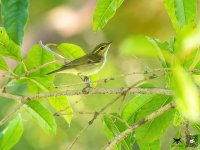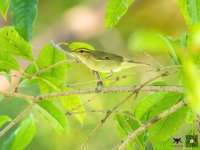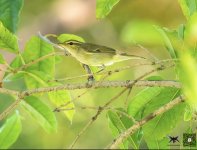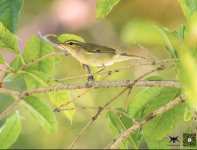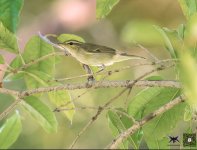Mac , there are several confirmed (vocalisation) records from eastern China from Zheziang to Jiangsu in both migration seasons Apr-May and Sep-Oct + it's regular, but very scarce, in Korea. It is regular migrant through Taiwan en route to/from wintering grounds in the Philippines so it is no surprise at all it should occur in this part of China. It has been recorded in Borneo (Sabah) and Hong Kong and is quite regular (but v.scarce) in spring (mid-Apr) in the Gulf of Thailand + there is a single Apr record from Vietnam.
Thanks for the reply, Grahame.
I wasn't really asking about
very scarce sightings, but about your words '
perfectly plausible' for JLW in Jiangsu in October.
I don't think that JLW is '
perfectly plausible' which to me would mean '
common enough to be no surprise', as you say in your reply, either in that region at any season, or in Japan itself, Korea, or coastal east China, at this season (mid-October).
I don't have a problem with JLW occurring as a
scarce vagrant in Zheziang and Jiangsu (confirmed by vocalisation), blown off course, perhaps, as is presumably the case for the Gulf of Thailand birds you mention, and the same in other places you mention. But, for example, if JLW were 'no surprise' in that region of China, why would it be 'very scarce' in South Korea, given that South Korea is between the Chinese coastal regions and the JLW's breeding grounds in the highlands of Japan?
Obviously, I agree with you that a voice recording would be necessary if, for some reason, you
absolutely had to pin down one or other of the three new species out of season or location. But I submit that Kamchatka Leaf is overwhelmingly more likely both on location and on season for Deanman's bird.
Unless you are suggesting that JLW breeds on the continent (Mongolia?), and therefore might be flying directly to its wintering grounds over Jiangsu, I think it would be much more accurate to reply to Deanman with 'It's almost certainly KLW because of the season and location, but there is a tiny possibility that it's JLW'.
And indeed wouldn't Arctic
sensu strictu, P.
borealis, (of which I have no knowledge, but based on maps on bird sites online) be more likely than JLW?




